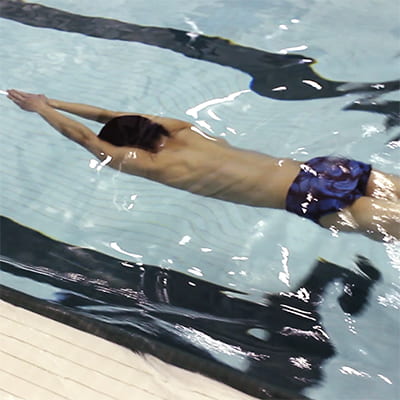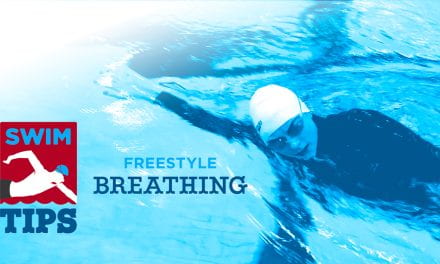Swimming is one of the best forms of cardiovascular exercise for people of all age groups and fitness levels. This low impact form of exercise offers a full-body  workout that helps release stress and tension. Just like with every other form of exercise, correct form and technique will improve results and help minimize injury.
workout that helps release stress and tension. Just like with every other form of exercise, correct form and technique will improve results and help minimize injury.
Freestyle, or front crawl, is one of the most widely taught swimming strokes and is a popular stroke for fitness training. However, there are a lot of different components that create an efficient stroke. In this series we will be breaking down each component so that when put together, you will be able to build an effective and efficient stroke.
The first step to mastering a swimming stroke is achieving the correct body position. Drag is the biggest obstacle that a swimmer needs to overcome to move efficiently through the water. With a body position that is horizontal in the water, you minimize the amount of drag force that is slowing your motion.
Learning to have a good floating position is the starting point for all strokes.
- Start with your body straight and arms and legs extended. Your hips should be near the water surface and your head should be mostly submerged, with your head in anatomical line with your body and eyes looking toward the bottom.
- Some body types will find holding this position difficult, as your feet will begin to sink. To counteract this, try inhaling deep into your belly, and pressing your shoulders and head slightly toward the bottom.
- Once you are comfortable and able to relax in a floating position, you will be ready to work on your flutter kick, which we will cover in our next installment of this series.
Starting May 2019, Sport and Wellness will be offering a new Value-Added class on Thursday mornings- Swim Training. Visit our website for information on learn-to-swim and fitness swimming options.
By Jason Britton and Victoria Mitchell
Jason is a full-time Lifeguard/Instructor here at MacEwan University Sport and Wellness. He has 19 years of aquatic and coaching experience and is a primary coach for both the Masters Swim and the Youth Triathlon programs at Sport and Wellness.
Victoria is a Lifesaving Society Swim Trainer and Red Cross Water Safety Instructor Trainer. She is also MacEwan University’s newest Aquatic Programmer.


